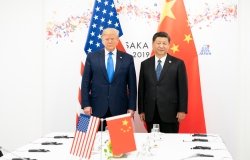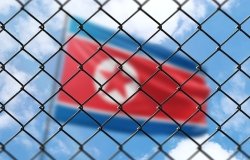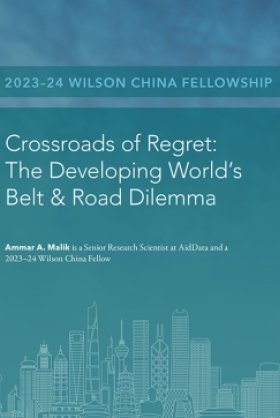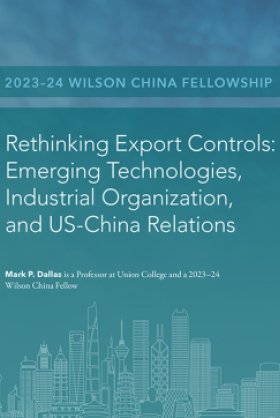Latin American Program in the News: As Colombian Drug Gangs Collapse, Mexican Cartels Get Tons of Cheap Coke
This article covers a working brief by Daniel Rico on the weakening of the Colombian organized crime and drug-trafficking groups, Bacrim, and the transfer of power to Mexican cartels.
Want to understand why Mexican cartels are awash in cheap Colombian cocaine? The decline and fall of Colombia’s drug gangs, once the undisputed masters of the illicit drug trade, help explain it.
According to a recent report from the Woodrow Wilson Center for International Scholars, the Mexican cartels are taking on a greater share of the cocaine supply chain, heavily originating in Colombia, while the Colombian drug groups known as the Bacrim are in decline. The Bacrim — a term used for the Colombia’s narco-paramilitary gangs — have “entered a phase of organizational fragmentation and weakening” (.pdf, in Spanish) according to the report. That weakness has led to Mexican market strength, as the cartels are now able to more easily shop around and drive a higher bargain from the fragmented groups. In a way, it’s a sort of self-fulfilling narco-economic prophecy.
Daniel Rico, the report’s author and a former counter-narcotics adviser to the Colombian Defense Ministry, began by looking at drug trafficking data collected by the United Nations and the Organization of American States. What he found was a connection between the growth in the number of Bacrim groups in the late 2000s — which he believes was a sign they were fragmenting into smaller groups — and a decline in coca cultivation. The share of cocaine profits for the Bacrim also declined. In the late 1990s, a kilo of Colombian cocaine could bring in $16,000 in profit after export to the United States. Today, the Bacrim make about $5,500.
That’s still a profit, and Rico writes that the Bacrim remain violent and dangerous. However, “In market terms, this meant that on account of increased competition between Bacrim as the suppliers of cocaine, Mexican cartels were strengthened as buyers improved their bargaining power and increased their profit margin per kilogram of cocaine,” Rico writes.
It’s important to briefly define what the Bacrim is. For one, the name is an abbreviation for Bandas Criminales or “Criminal Bands” — a clunky term created by the Colombian government to describe a new generation of loosely-connected gangsters. Mostly, the Bacrim is made up of drug traffickers from several now-extinct cartels, and ex-fighters from the United Self-Defense Forces of Colombia (AUC), a demobilized army of right-wing paramilitaries who mostly gave up their guns in a 2006 peace deal.
To put it simply, the Bacrim are those AUC paramilitary fighters who didn’t demobilize, but kept their weapons and traded their uniforms for street swag. Today, and together with the former cartel gangsters from the Norte del Valle Cartel, the Bacrim amount to various networks of (sometimes warring) drug trafficking groups, with differing levels of ability and territory, and who largely make money from selling cocaine, kidnapping people, extorting businesses and operating illegal gold mines. The government in Bogota considers them one of the country’s most grave security threats.
But according to Rico, the Bacrim’s muscle has also weakened in addition to their profits, leaving them unable to directly confront larger drug trafficking groups like the FARC. Many top leaders have been arrested in recent years, including Juan Carlos “Armando” Calle, the leader of the Rastrojos, a large Bacrim gang and a chief supplier to Mexican drug lord Joaquin “El Chapo” Guzman. To bypass the Mexican cartels in attempt to regain lost profits, the Bacrim are increasing exports of higher-purity cocaine to Europe, leaving the lower-quality coke to the U.S. market.
But Rico cautions that the Bacrim may not be necessarily doomed. Or if they are doomed, it doesn’t mean organized crime in Colombia will go away. “The transformation involves only the change in the system’s hierarchy and controls,” he writes. “The new organizations although scattered and with less international capacity, are also a source of danger and crime that requires equal attention.”
So their decline may not reduce violence in Colombia, either. But if Rico is correct, it could mean even more problems for the Bacrim.
Please read the original article here.
Related Program

Latin America Program
The Wilson Center’s prestigious Latin America Program provides non-partisan expertise to a broad community of decision makers in the United States and Latin America on critical policy issues facing the Hemisphere. The Program provides insightful and actionable research for policymakers, private sector leaders, journalists, and public intellectuals in the United States and Latin America. To bridge the gap between scholarship and policy action, it fosters new inquiry, sponsors high-level public and private meetings among multiple stakeholders, and explores policy options to improve outcomes for citizens throughout the Americas. Drawing on the Wilson Center’s strength as the nation’s key non-partisan policy forum, the Program serves as a trusted source of analysis and a vital point of contact between the worlds of scholarship and action. Read more











